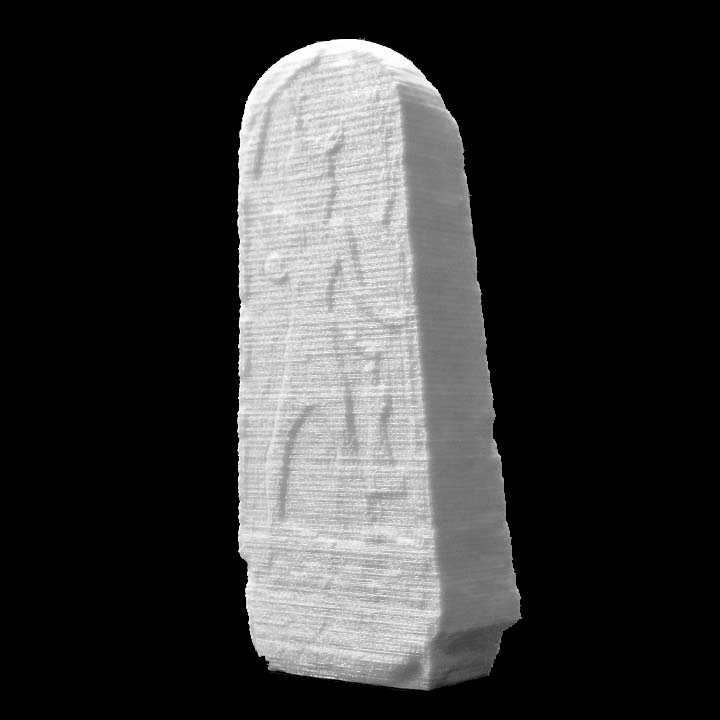
The stele of Baal with Thunderbolt at The Louvre, Paris
myminifactory
The majestic decoration on this arched stela showcases the mighty storm god Baal wielding a powerful club and thrusting a spear bursting with vegetation into the ground. A smaller figure, likely the king of Ugarit, stands beneath the protection of the god. This stela, the most significant among those discovered at Ugarit, demonstrates the widespread production of stelae in the Near East during the Late Bronze Age, where they emerged as a prominent medium of artistic expression. The large stela in the Louvre features a relief carving of a monumental male figure in action, towering over a much smaller figure standing on a pedestal. The horned headdress worn by the main figure signifies that he is a god. He faces right, his right arm raised above his head and brandishing a club, while his other arm outstretched carries a spear with its head stuck in the ground, surrounded by sprouting vegetation. The god's beard is visible, and two long coils of hair fall below his shoulders. A dagger hangs at his waist, its tip touching the head of the small figure. The latter wears a long robe trimmed with braid, concealing his arms, and has a bare small round head. The pedestal on which he stands is a horned altar, smaller and less ornate than the one upon which the main figure stands. Today it is widely accepted that this scene depicts the god Baal unleashing a storm from the club he brandishes in the traditional pose of the storm gods worshipped throughout the Levant - the Greek god Zeus and the Roman god Jupiter would later adopt the same pose and attributes. The beautiful visual metaphor of the spear transformed into a plant represents the beneficial effects of the rain produced by storms. The small figure crouching between the god and his spear is generally thought to be the king of Ugarit, dressed in ceremonial attire, with arms crossed in prayer and receiving divine protection. Like the god, he has been placed on an altar as an allusion to his role as officiant in ceremonies? The motifs carved on the two-tiered altar on which the god stands are more difficult to interpret: is the monstrous snake causing the death of Baal depicted above the carved waves of the ocean? Or is it the horizon of mountains surrounding the kingdom of Ugarit, protected by Baal, whose home is "in the innermost reaches of Mount Sapon"? The stela depicting the storm god Baal is the largest and most significant among those discovered at Ras Shamra. It was found along with eight others near the temple to which it gave its name: four were discovered near the Temple of Dagon and another ten in various locations around the city. Usually broader towards the bottom, the stelae were topped with an arch or a pyramid, and had either a lower part sunk into the ground or a wide base forming a set of steps. Comparison with stelae excavated on other Bronze Age Syrian-Palestinian sites indicates that the stela was a major form of religious expression in the Levant. It could have a niche carved into it, as at Byblos, be decorated with astral motifs, or depict a ritual scene or a deity, like the most outstanding examples.
With this file you will be able to print The stele of Baal with Thunderbolt at The Louvre, Paris with your 3D printer. Click on the button and save the file on your computer to work, edit or customize your design. You can also find more 3D designs for printers on The stele of Baal with Thunderbolt at The Louvre, Paris.
